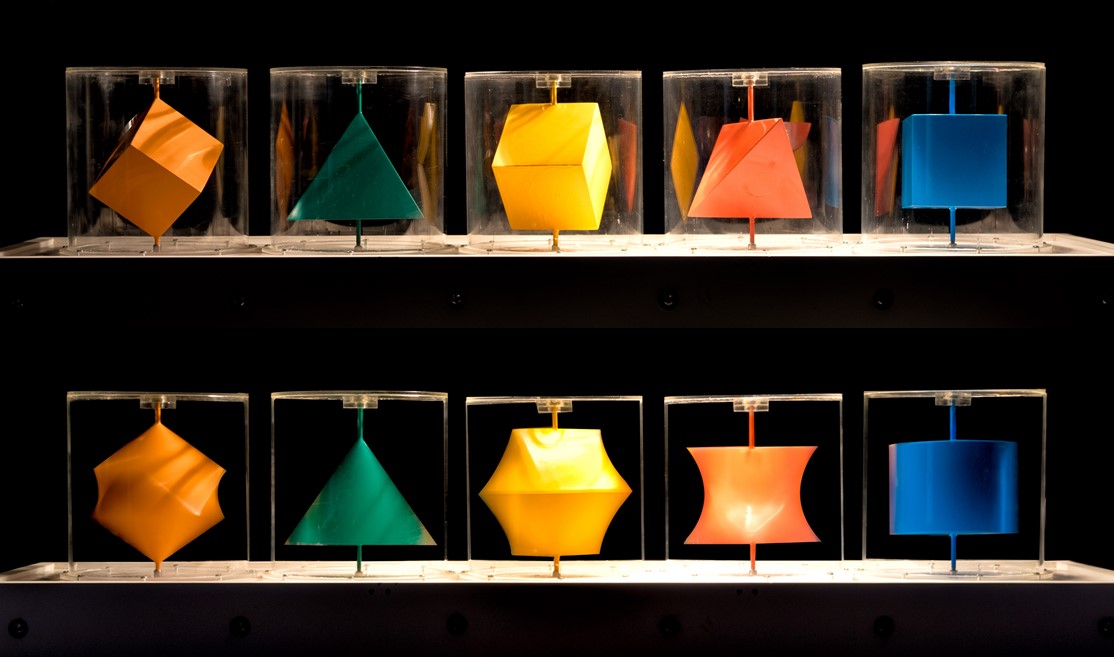POLYHEDRA'S REVOLUTION
By rotating the blue cube, we get a cylinder. In fact, if we pay more attention, we have the visual impression of two cylinders: one denser, internal, and the other less dense, external. Note that these cylinders correspond to the rotation of the inscribed and circumscribed circles to the base of the square.
For other polyhedra and other axes, the figures obtained are more sophisticated. Parts of hyperboloids appear, resulting from the rotation of line segments that are in reverse lines to the rotation axes.
Note that the densest part corresponds to the points that are always on the polyhedron, regardless of their position: it is the intersection of all possible positions. The least dense corresponds to the points that are in the polyhedron in at least one position: it is the union of all possible positions!
In the photos and video below, the formation of these polyhedra of revolution can be seen more clearly from the rotation of some solids around a certain axis.

